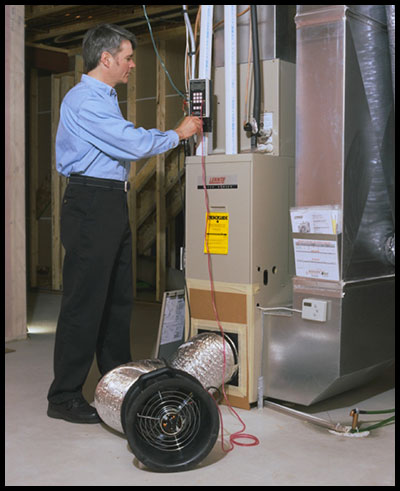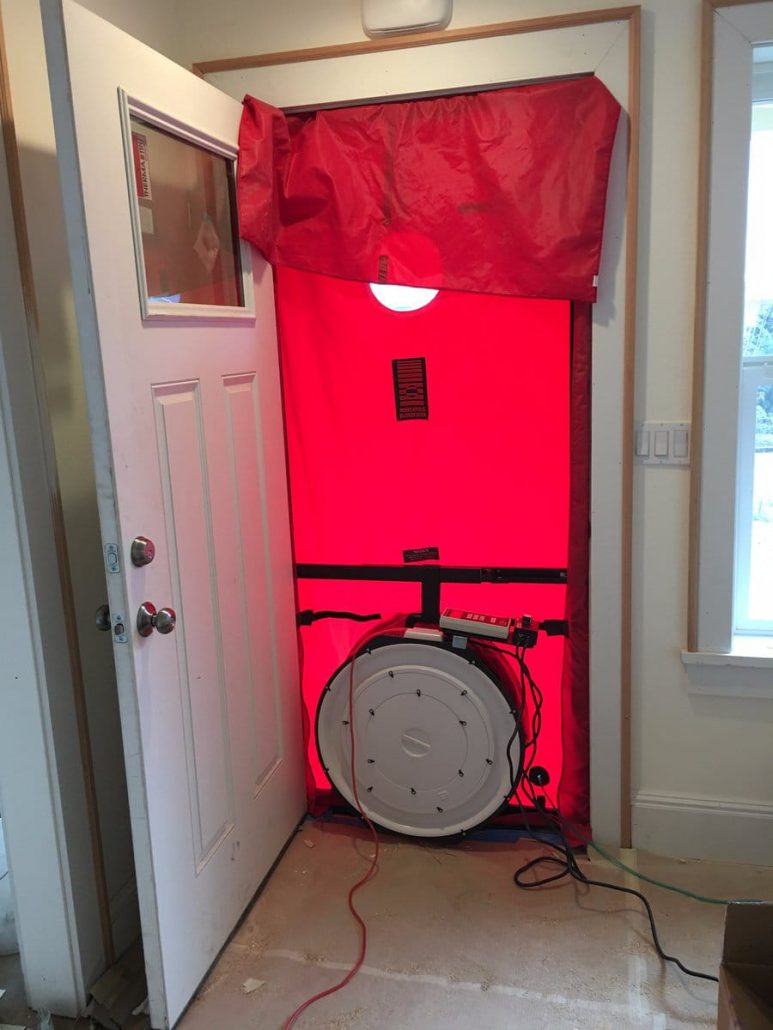
Duct leak testing in Vancouver Washington
Studies by various researchers have identified duct leakage as one of the main causes of energy losses in forced air distribution systems. Duct leakages have a direct impact on the overall efficiency of any HVAC ductwork and it is therefore important to ensure that all leakages are fixed as soon as they are identified. Equipment and installation failures are the main causes of leakages in forced air distribution systems. These causes include seams in the duct distribution systems, poorly fitting joints, building cavities, poor connections, failed taped joints, and disconnected boot connections. The Minneapolis Duct Blaster performance testing system is ideal for identifying the presence of such leakages in the duct system and we perform leak detection of your duct-work using the Minneapolis Duct Blaster System and we can test individual ducts or your whole system for costly duct leakage.
The Minneapolis Duct Blaster system is one of the most effective tools for testing forced air distribution networks of homes and commercial buildings. This revolutionary method of performance testing provides an accurate and reliable means of testing and documenting the air-tightness of duct systems. It operates by either pressurizing or depressurizing the forced air distribution systems and accurately measuring the required parameters. This performance testing system is designed and optimized to measure fan flow and the pressure of the forced air HVAC ductwork. It’s ideal for estimating the overall efficiency losses and diagnosing air leakage problems in duct systems. It also provides a precise and reliable method of certifying the quality of ductwork installations.
Owing to the differences that exist between various air distribution systems, this performance testing tool is specially engineered for various designs. It is therefore ideal for pressurization as well as depressurization testing of HVAC ductwork.
The airtightness of a forced air duct system is usually determined by connecting the performance testing system at the central return grille. Alternatively, the system can be connected at the air handler cabinet of the ductwork. The next step involves sealing off all openings in the air distribution system such as return registers, supply, and ventilation air inlets. The Duct Blaster fan is then powered and employed in pressurizing or depressurizing the entire forced air distribution system. The process is usually carried out at a standard test pressure. Residential air distribution systems are usually tested at 25 Pascals as recommended by various HVAC duct testing programs. This value, as per various researches, is a typical operating pressure for most residential systems.
The high precision and reliability of the Minneapolis Duct Blaster system have made it the preferred performance testing tool for various performance-based regulations and programs. It’s widely used for IECC Compliance Building Codes, Title 24 testing, and Energy Star compliance testing to name a few. We use this performance testing system in the design, installation, and maintenance of various types of forced air distribution systems.
Blower Door Testing in Vancouver WA
 A blower door test is performed by temporarily installing a powerful fan that is fixed into the frame of an exterior door. When turned on, the fan pulls all the air out of the house and lowers the air pressure inside. This results in the higher outside air pressure flowing into the house through any unsealed cracks and openings, revealing the air infiltration rate of the home and showing where an air leak may be hiding.
A blower door test is performed by temporarily installing a powerful fan that is fixed into the frame of an exterior door. When turned on, the fan pulls all the air out of the house and lowers the air pressure inside. This results in the higher outside air pressure flowing into the house through any unsealed cracks and openings, revealing the air infiltration rate of the home and showing where an air leak may be hiding.
If your HVAC system is not performing as well as you think it should or if you suspect that you might have air leaks in your house contact us and we can perform a blower door test to pinpoint your problem areas.

